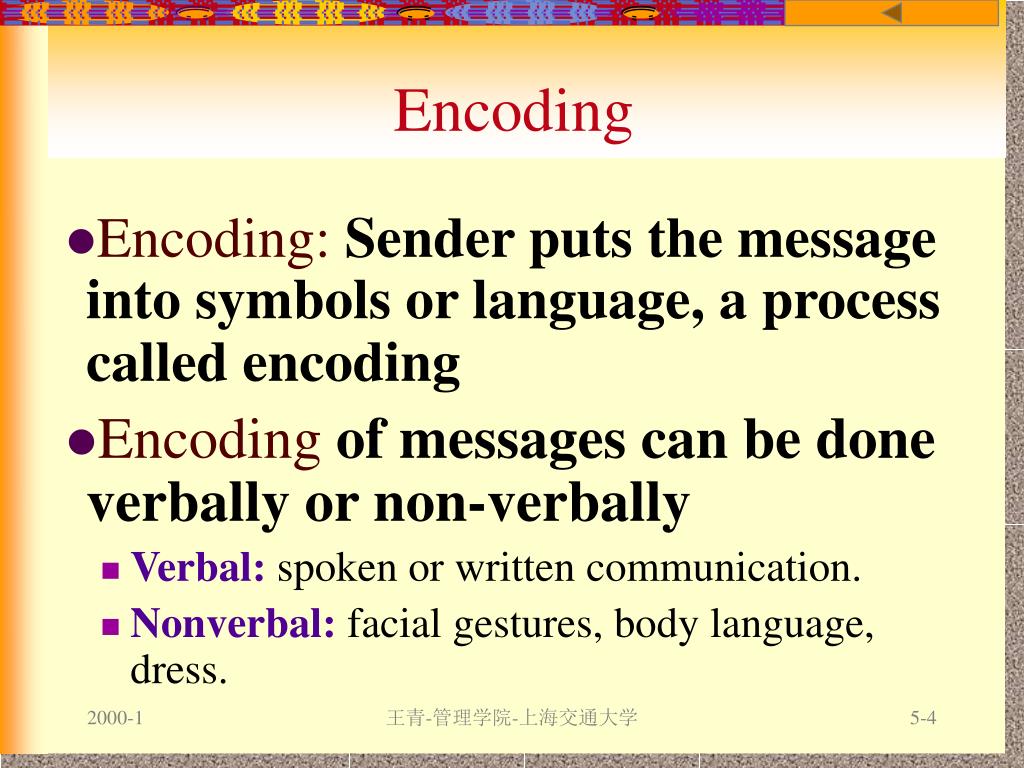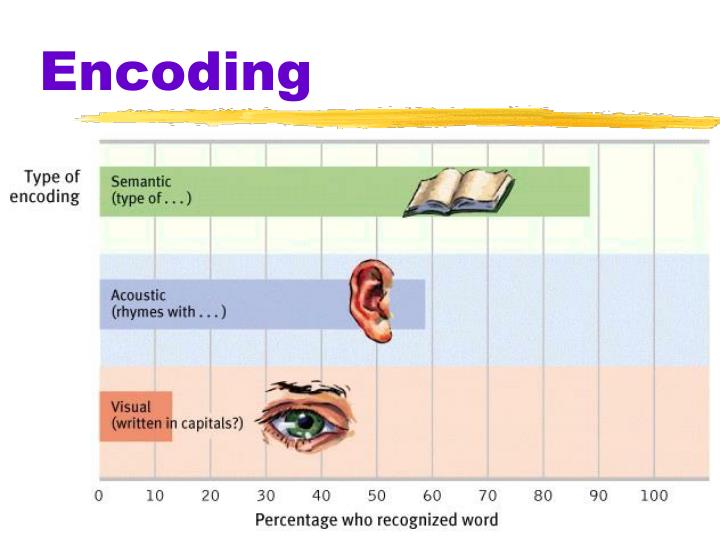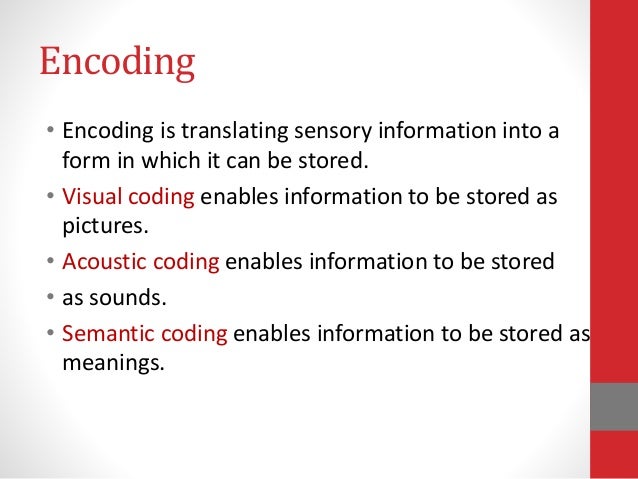

Baddeley’s model of working memory states that visual information is stored in the visuo-spatial sketchpad. Visual sensory information is temporarily stored within our iconic memory and working memory before being encoded into permanent long-term storage. Visual encoding is the process of encoding images and visual sensory information. Visual, acoustic, and semantic encodings are the most intensively used. 7 Computational Models of Memory Encoding.5.1 Maintenance and elaborative rehearsal.Using phonetic encoding, one may translate livre into leaf and visualize leaves pressed within a book. For example, the French word for book is livre (pronounced leave). The keyword method is used to assist the recall of new vocabulary words and their meaning. Phonetic encoding also forms the basis of the keyword mnemonic Opens in new window. The link mnemonic Opens in new window may then be used to associate the images into interacting pairs of images, such as a crank being turned by a con to raise a pole. For example, the names Frank, Don and Paul may be translated into the similar sounding, high imagery nouns crank, con and pole. Phonetic encoding may also be used in conjunction with the link method of mnemonics. If, for example, Helen was rotund, one might have little difficulty thinking of a melon, and thereby recall the name Helen.



However, if the phonetic mnemonic were used in conjunction with semantic encoding Opens in new window, a critical link between some characteristic of Helen and the image of a melon might be established. Thus, if Helen were to appear, one might not readily think of a melon, and thereby recall the name Helen. The phonetic mnemonic does not necessarily provide a primary associative link between the original stimulus, the appearance of Helen and the image of a melon. Because of the high phonetic association of these words, if a melon were visualized, the name Helen would likely be readily recalled. Using phonetic encoding, one might translate the name Helen into melon. Phonetic encoding is a mnemonic technique involving the translation of an abstract and/or unfamiliar word into a similar sounding, more familiar, concrete, and high imagery word.Ĭraik and Lockhart (1972) have suggested that because phonetic encoding takes place at a more shallow level of processing than that at which semantic encoding is conducted, it will produce a weaker memory. Phonetic Encoding An Introduction to Phonetic Encoding


 0 kommentar(er)
0 kommentar(er)
